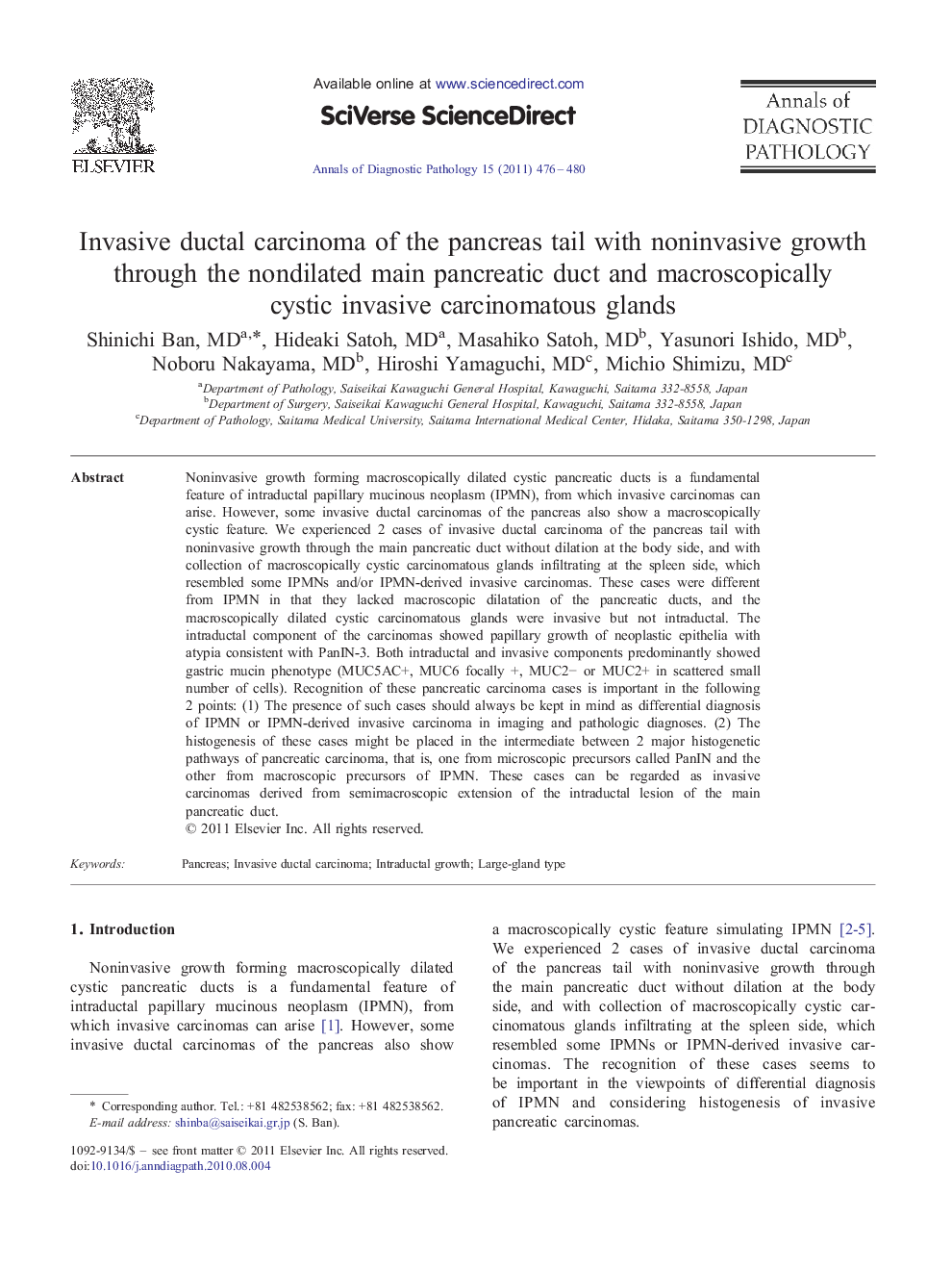| Article ID | Journal | Published Year | Pages | File Type |
|---|---|---|---|---|
| 4130420 | Annals of Diagnostic Pathology | 2011 | 5 Pages |
Noninvasive growth forming macroscopically dilated cystic pancreatic ducts is a fundamental feature of intraductal papillary mucinous neoplasm (IPMN), from which invasive carcinomas can arise. However, some invasive ductal carcinomas of the pancreas also show a macroscopically cystic feature. We experienced 2 cases of invasive ductal carcinoma of the pancreas tail with noninvasive growth through the main pancreatic duct without dilation at the body side, and with collection of macroscopically cystic carcinomatous glands infiltrating at the spleen side, which resembled some IPMNs and/or IPMN-derived invasive carcinomas. These cases were different from IPMN in that they lacked macroscopic dilatation of the pancreatic ducts, and the macroscopically dilated cystic carcinomatous glands were invasive but not intraductal. The intraductal component of the carcinomas showed papillary growth of neoplastic epithelia with atypia consistent with PanIN-3. Both intraductal and invasive components predominantly showed gastric mucin phenotype (MUC5AC+, MUC6 focally +, MUC2− or MUC2+ in scattered small number of cells). Recognition of these pancreatic carcinoma cases is important in the following 2 points: (1) The presence of such cases should always be kept in mind as differential diagnosis of IPMN or IPMN-derived invasive carcinoma in imaging and pathologic diagnoses. (2) The histogenesis of these cases might be placed in the intermediate between 2 major histogenetic pathways of pancreatic carcinoma, that is, one from microscopic precursors called PanIN and the other from macroscopic precursors of IPMN. These cases can be regarded as invasive carcinomas derived from semimacroscopic extension of the intraductal lesion of the main pancreatic duct.
